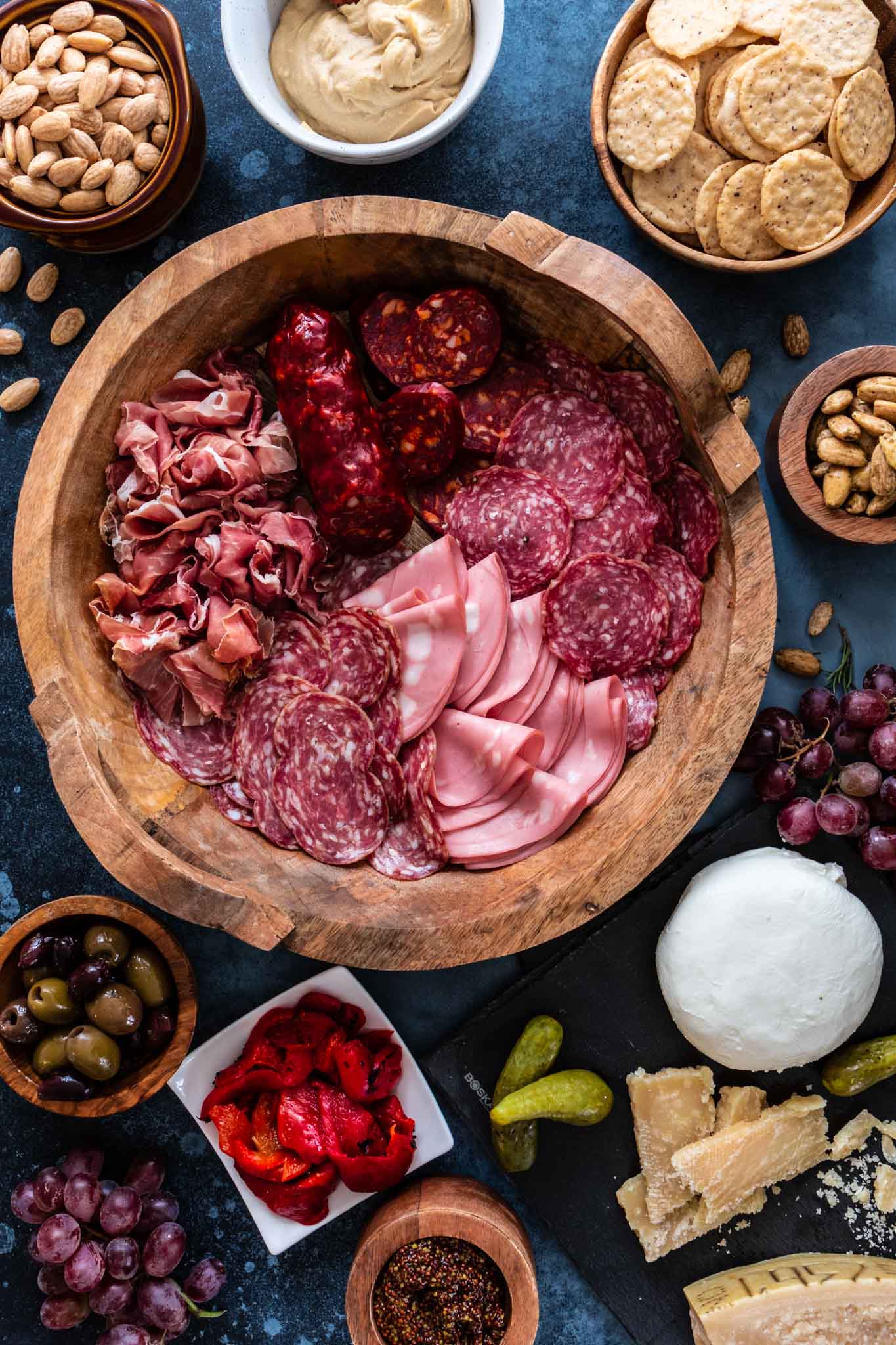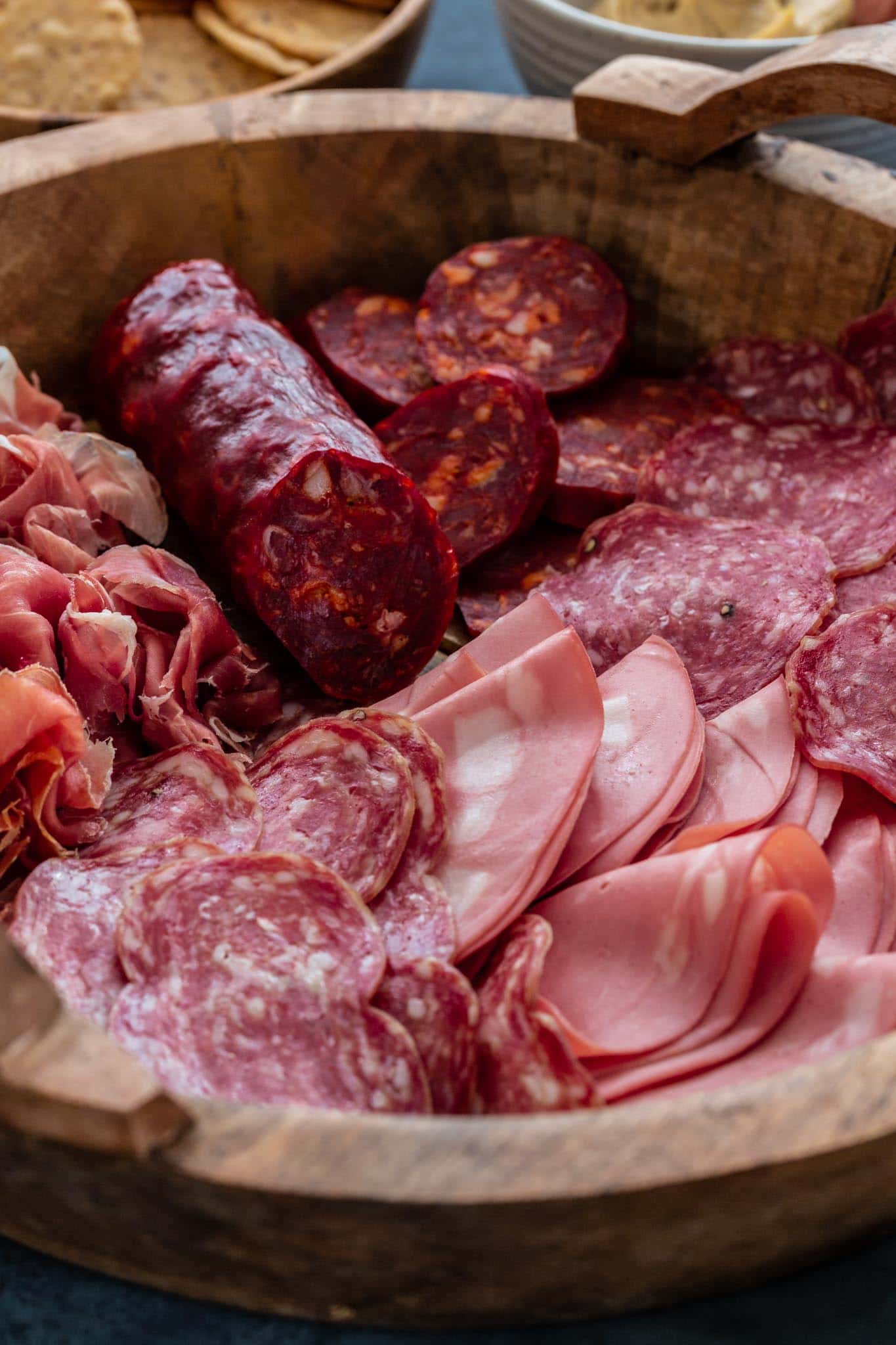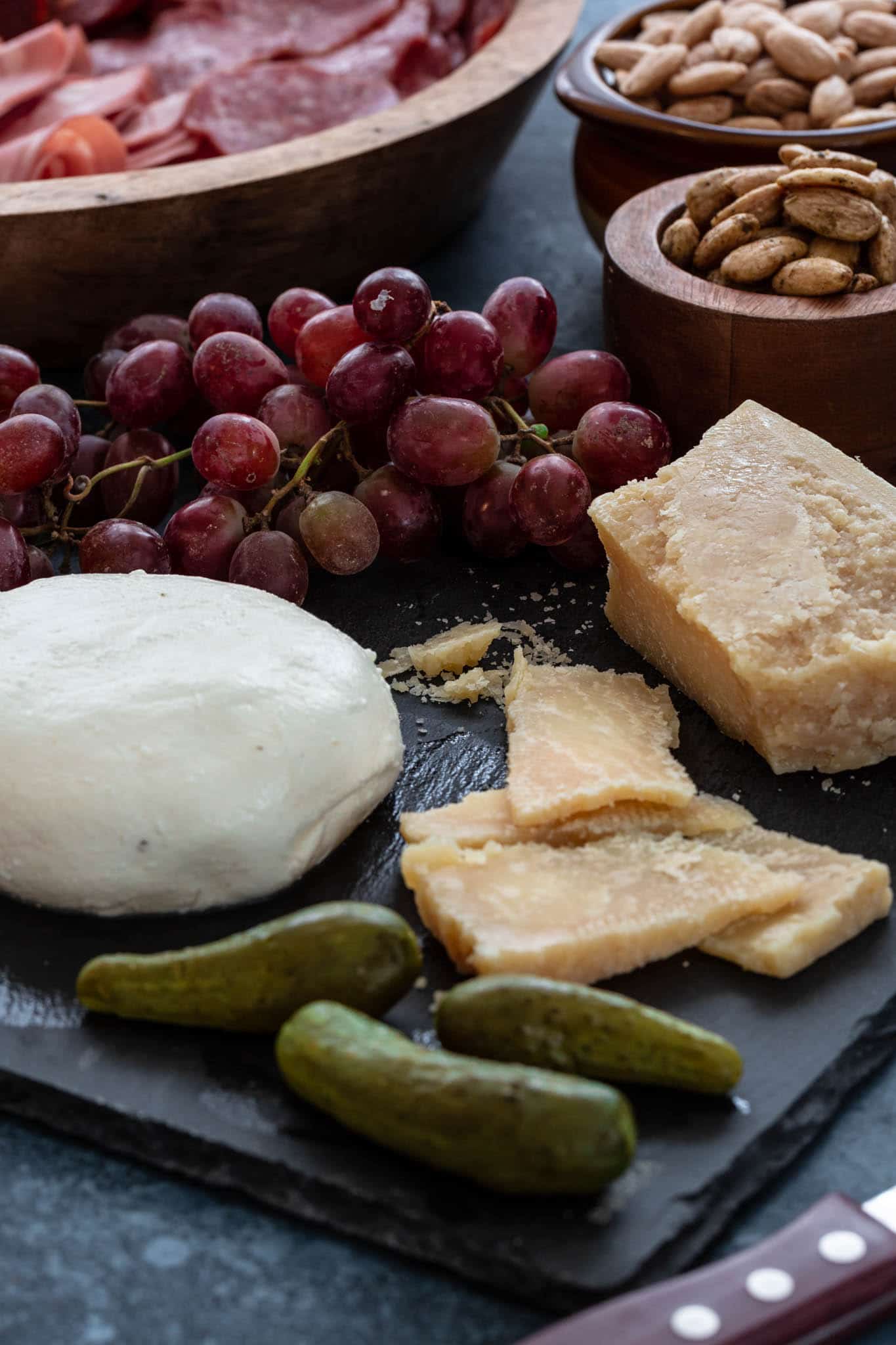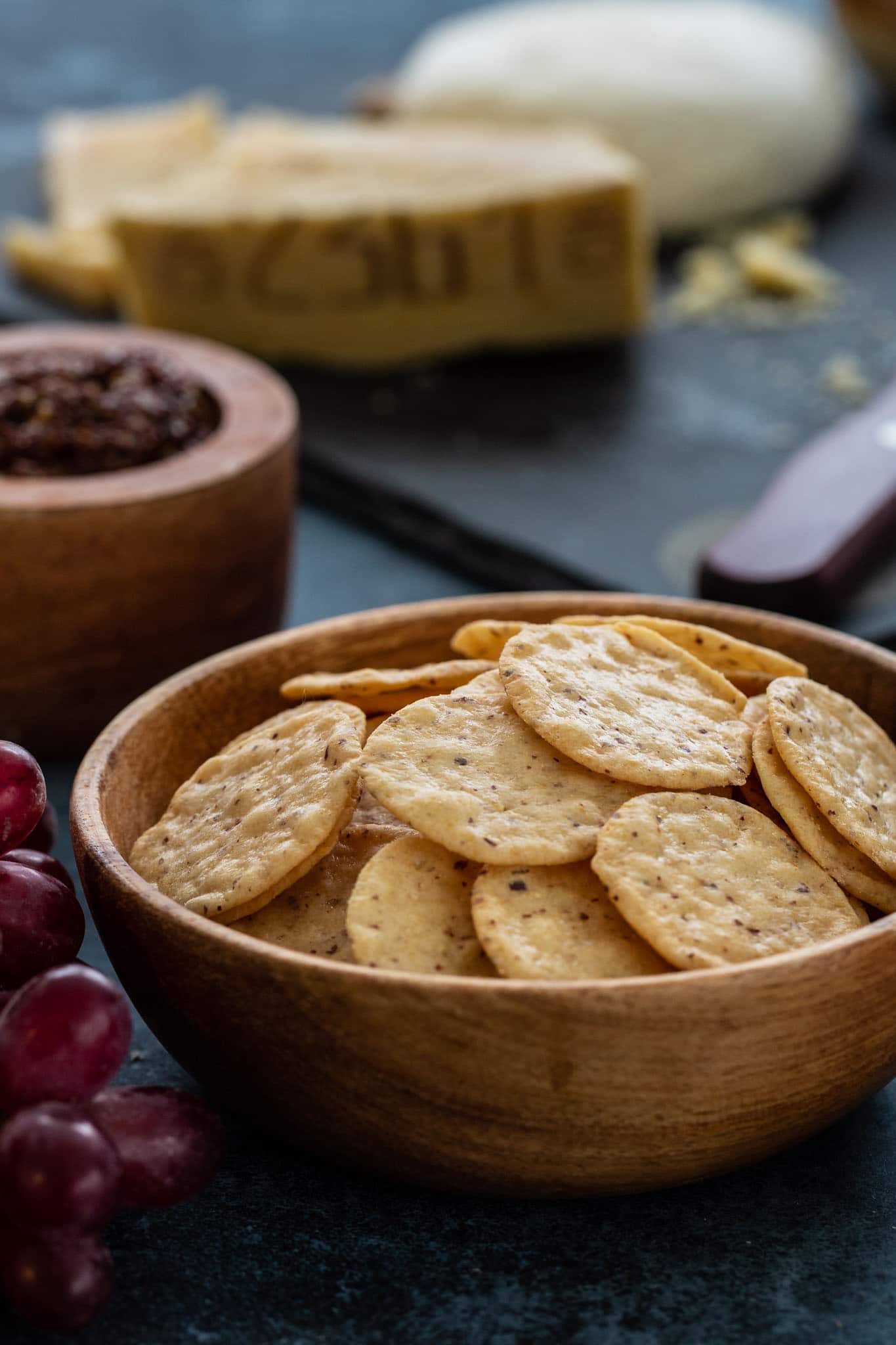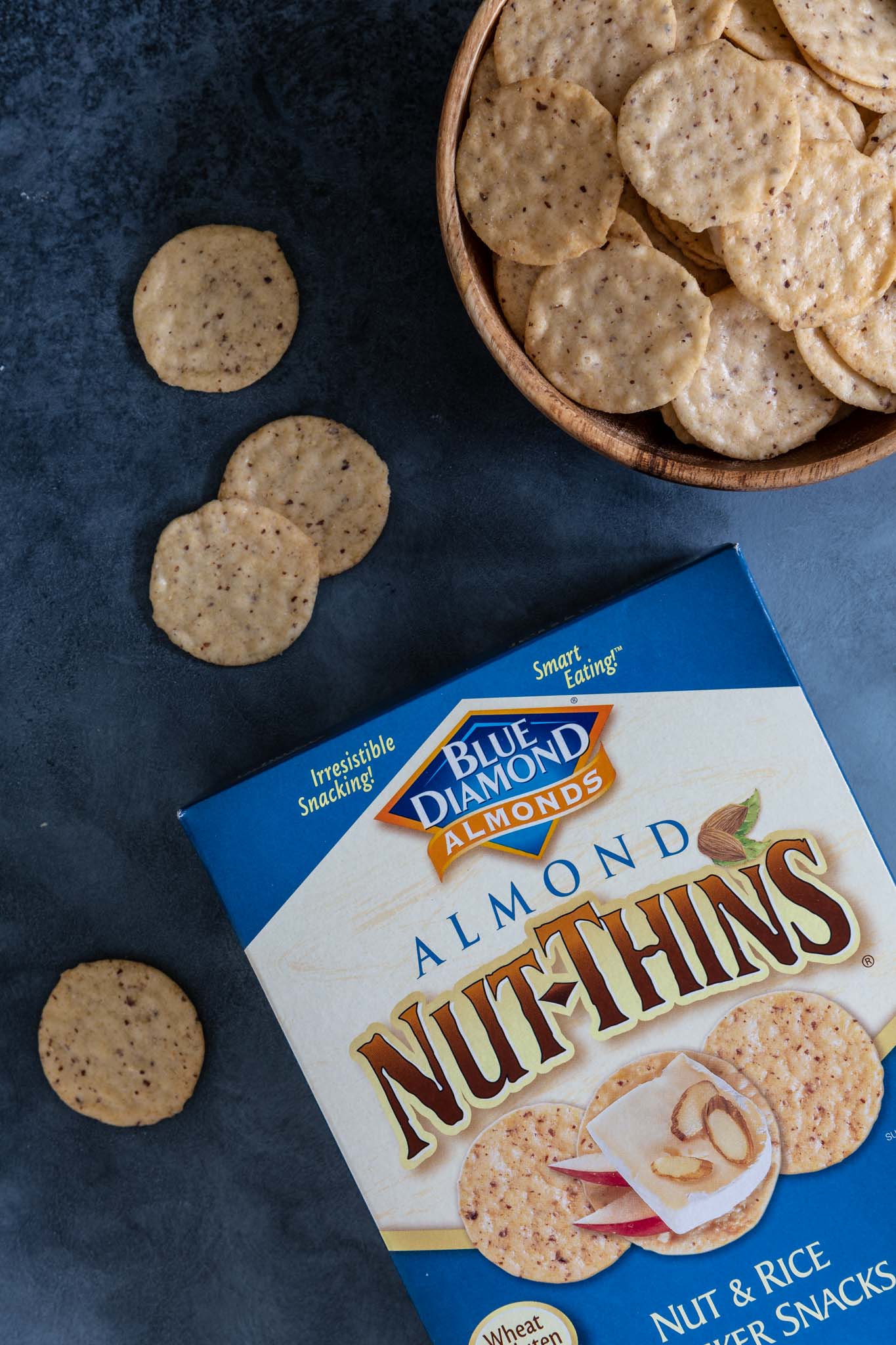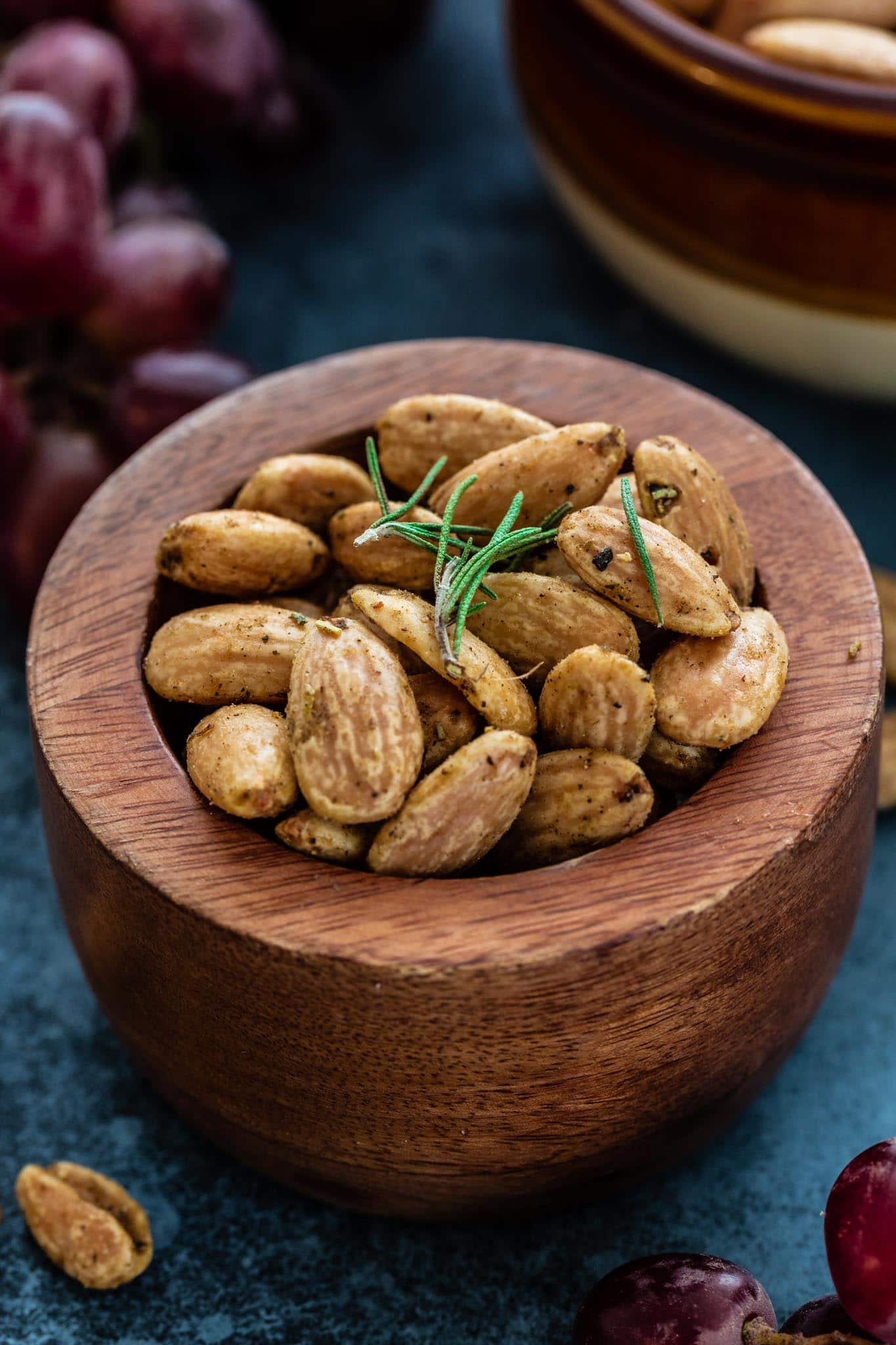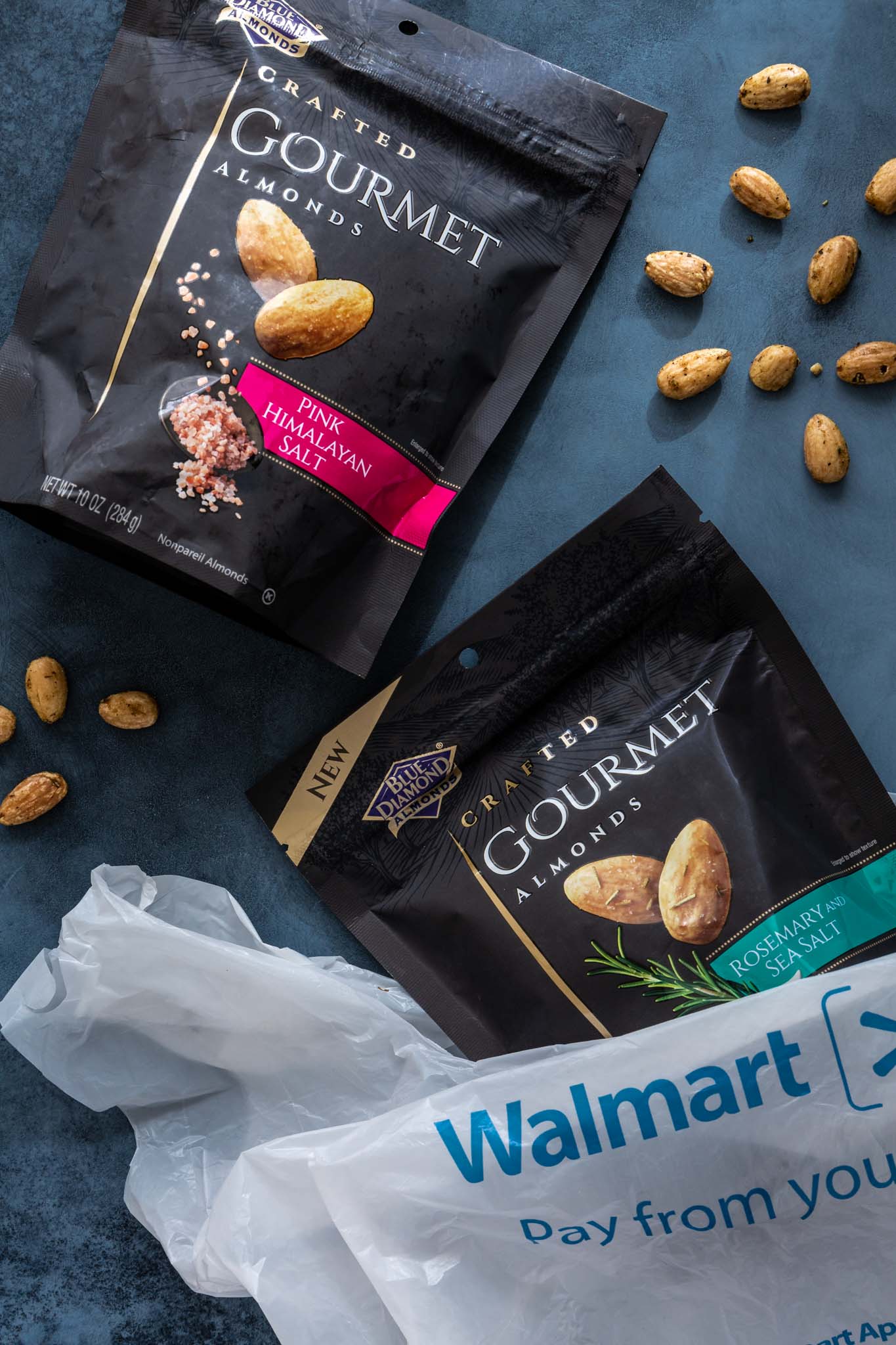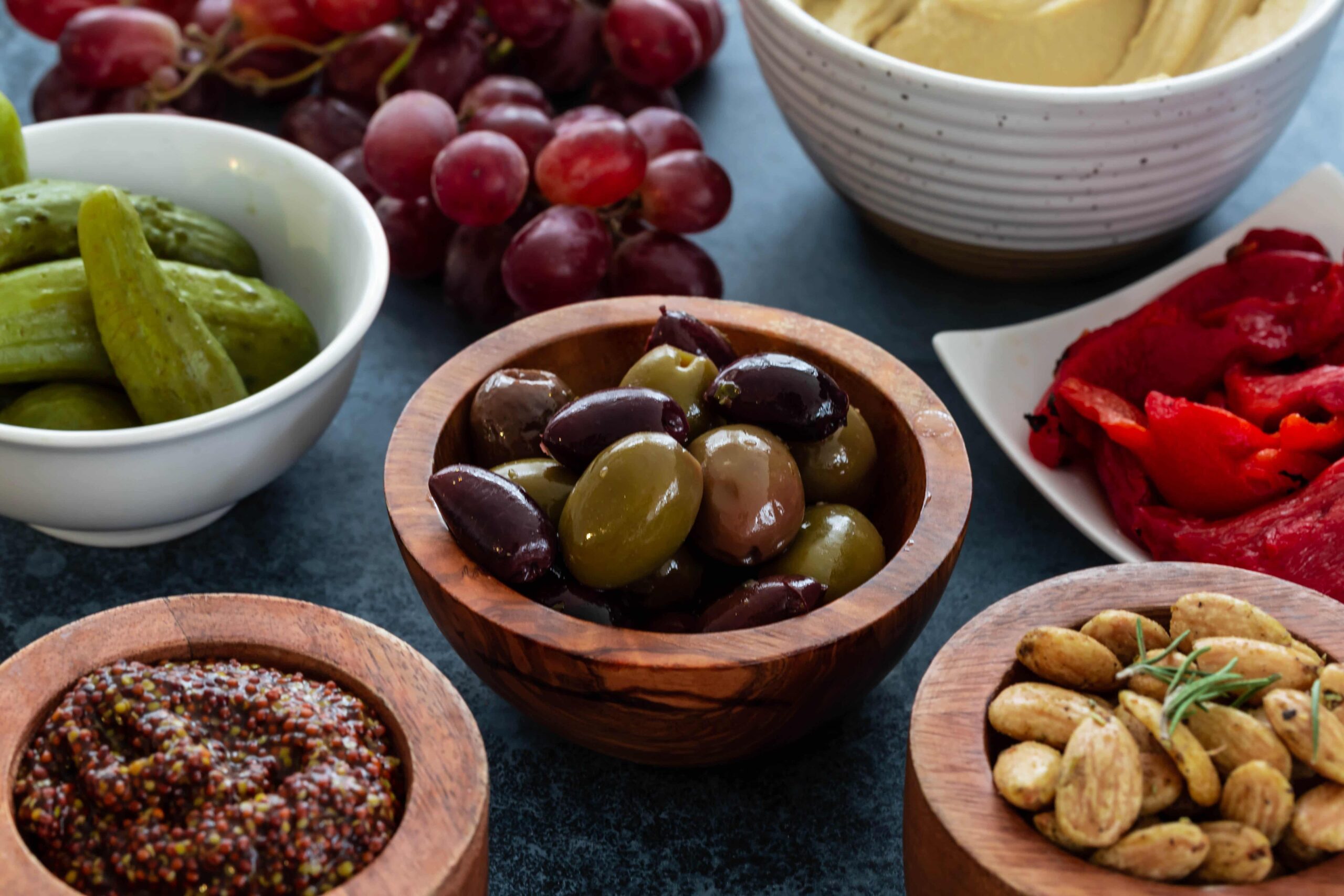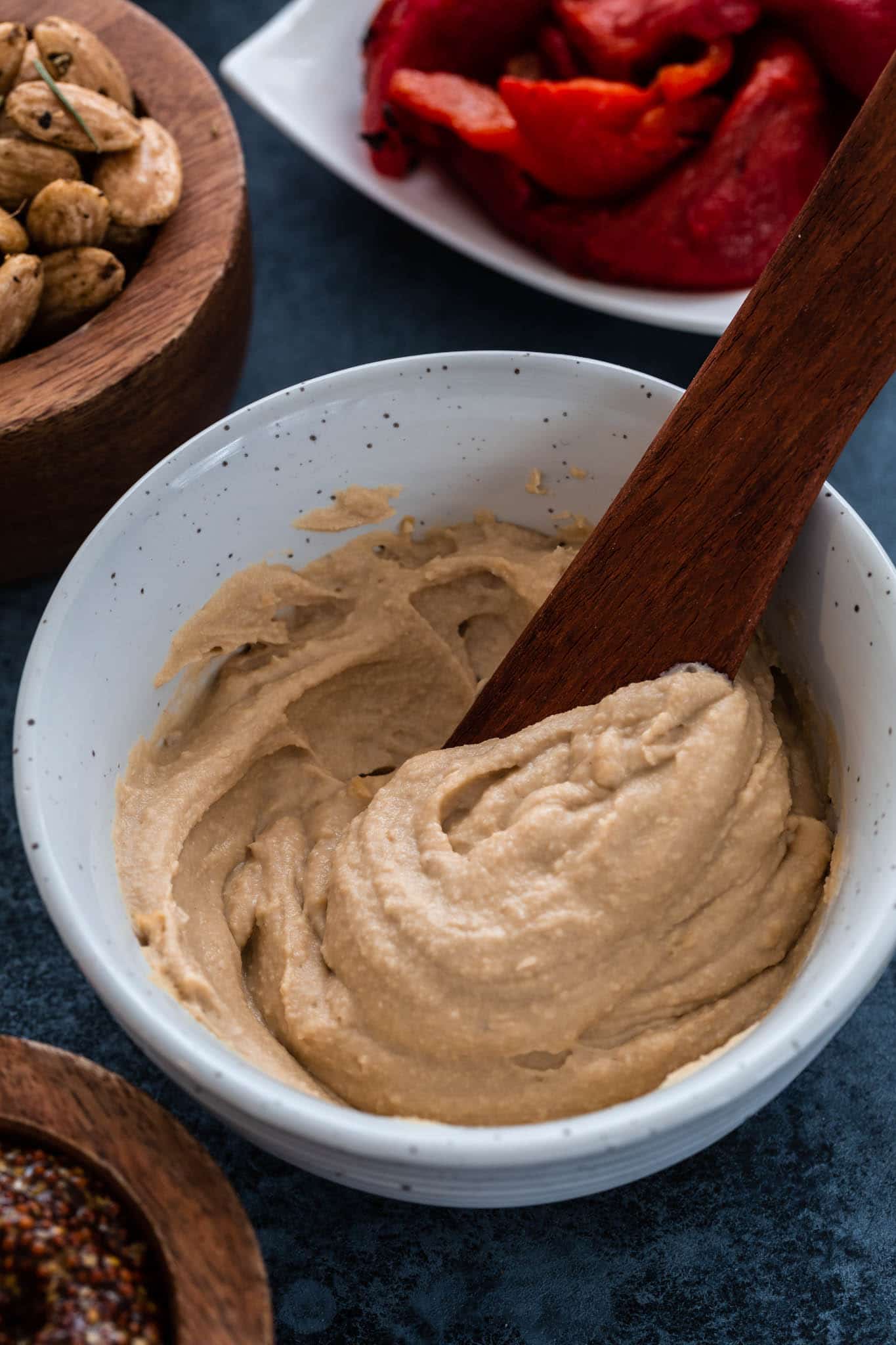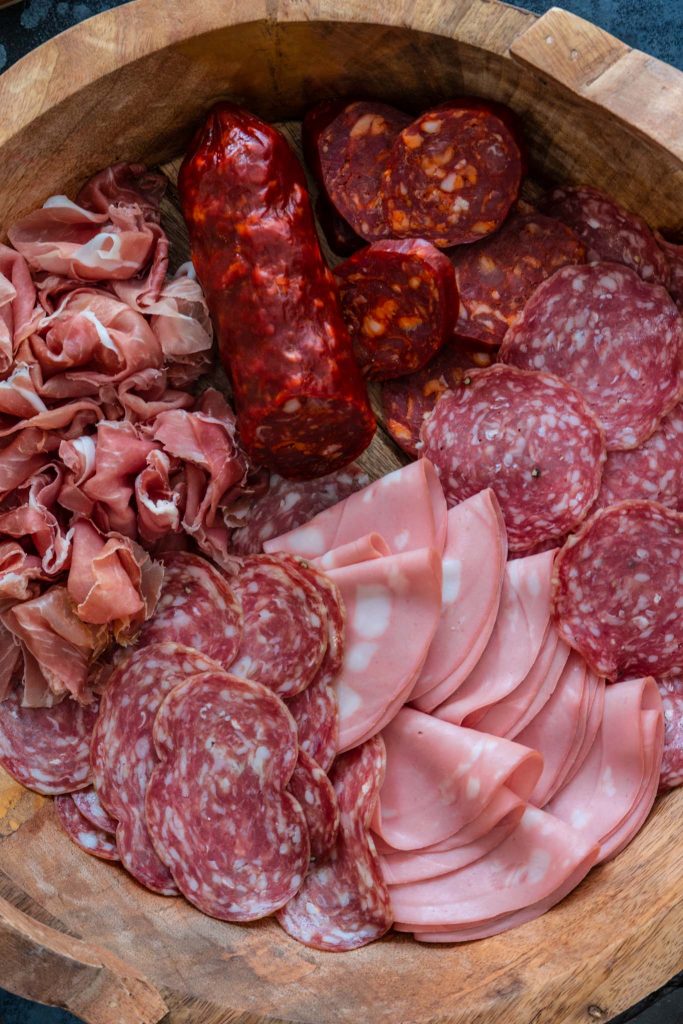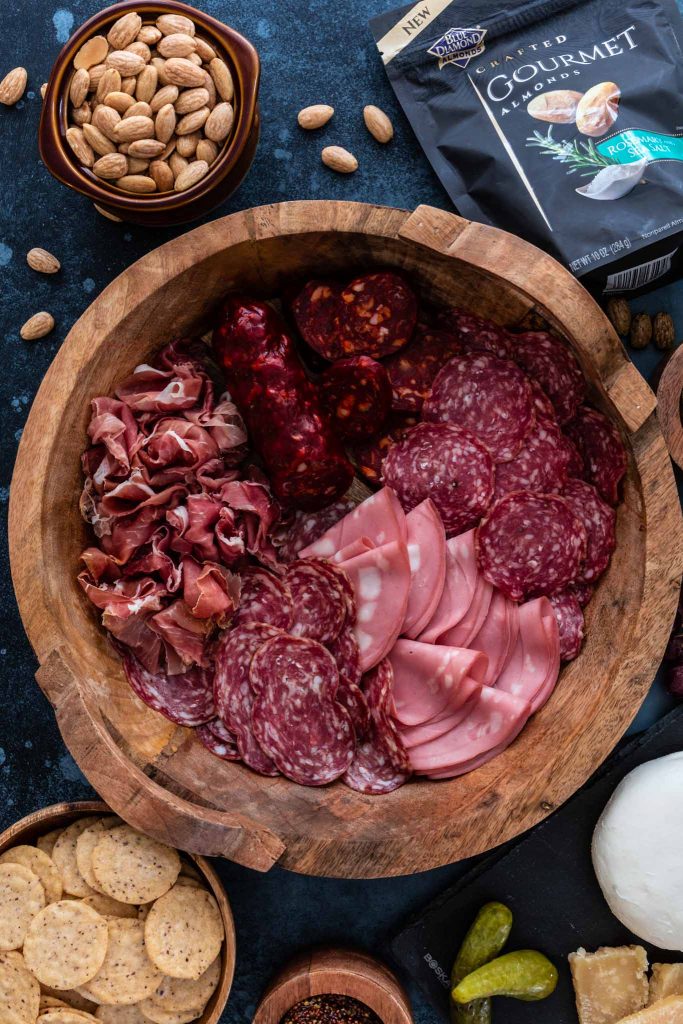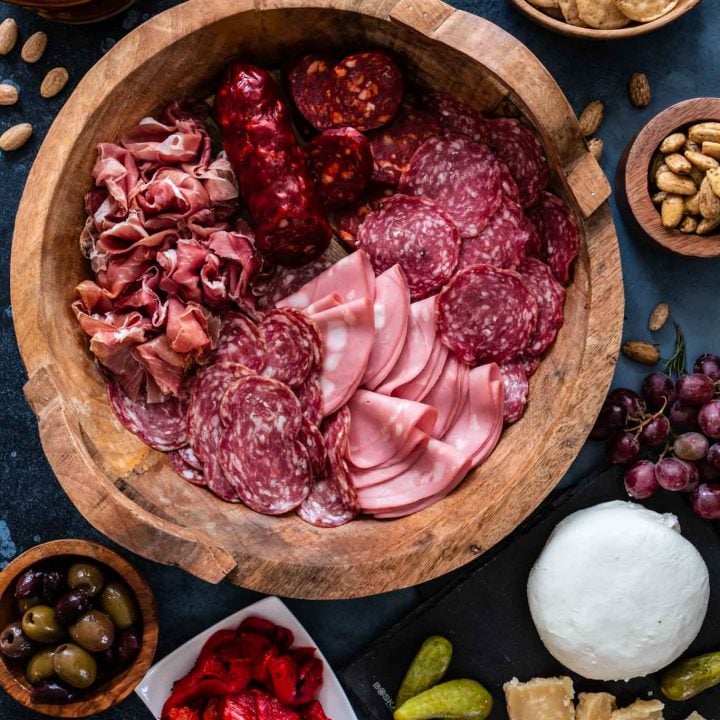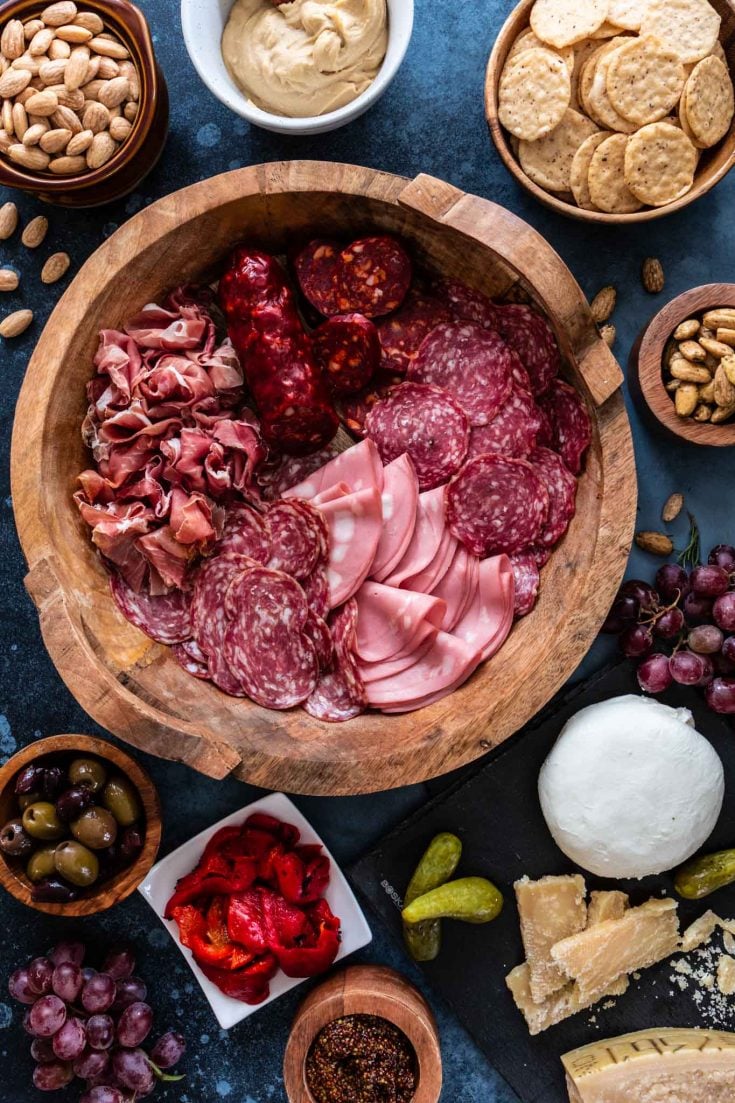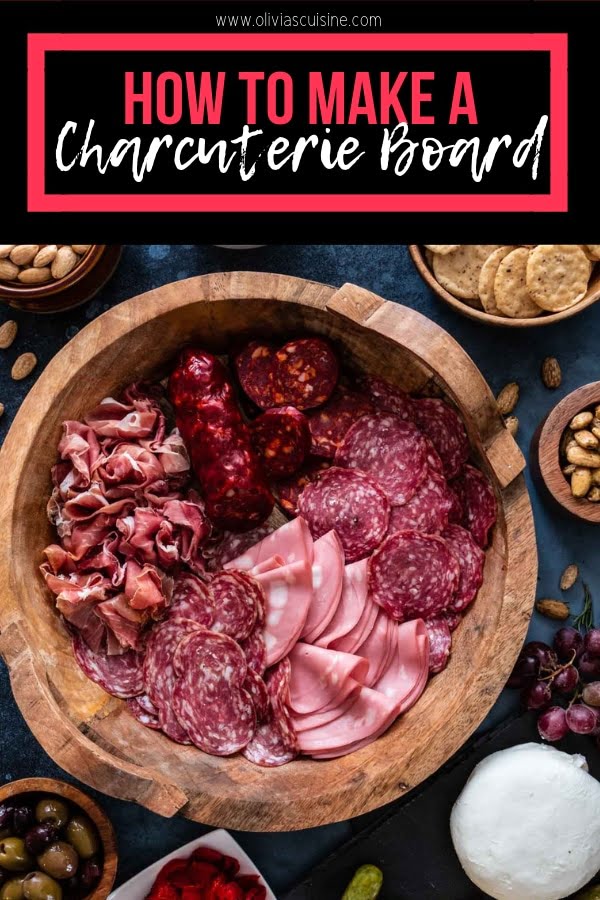This is a sponsored conversation written by me on behalf of Blue Diamond®. The opinions and text are all mine.
If you’ve been following this blog for a while, you know I’m a huge fan of appetizer boards. Not only are they visually appealing, but they are also versatile, and you can use them as pre-dinner nibbles or as the main event in a cocktail party. In past posts, I’ve shared a few tutorials for cheese boards, a DIY bruschetta bar, and a guide on how to put together a crudité platter. This time I’m raising the stakes and doing a charcuterie board. Yes, there is some cheese, and yes there are crudités. But, there are also some new additions. Now, I know a charcuterie board is not exactly budget friendly. Cured meat can be expensive and if you start adding other gourmet food, it can quickly get extravagant. So this post should serve more as a guide than a recipe per se. You should feel free to customize according to your budget and preferences! At the end of the day it’s about what you (and your guests) like to eat, your party’s size and how much money you can spend! Keep reading and I’ll share some of my recommendations and tips, including how much to calculate per person. But don’t worry! If you overshoot and end up with leftovers, you can always repurpose them into amazing sandwiches and snacks!
Charcuterie (shahr-cute-uh-ree) is a French word that means smoked, cured or cooked meats. Bacon, salami, sausage, ham, pâté, confit, terrines, rillettes, ballotines, and galantines are all considered charcuterie. I usually choose 4 or 5 items from different varieties, making sure I have contrasting textures, shapes and flavors. Most of the time, you can find a great selection at your supermarket, but some of you might need to visit (or be interested in visiting) a specialty store. For this charcuterie board, I shopped at my local Walmart. Some charcuterie experts will recommend you serve some items pre-sliced as well as some that you slice yourself. I don’t always follow that rule! I will choose pre-sliced over slicing myself often. And that’s because I love most charcuterie sliced paper thin! That being said, if you’re shopping at the supermarket, go to the deli counter instead of buying the pre-packaged stuff. You get to choose how thick you want the meat and it’s guaranteed to be fresh! I’m not a charcuterie connoisseur at all, in fact I consider myself to be quite a beginner. There is so much more to learn and taste! But I know the stuff I like and they work great in my charcuterie boards and are always very crowd-pleasing. Here are some of my favorites:
Prosciutto (or Jámon) – My absolute favorite! There can’t be a charcuterie board without it! I like to splurge for Prosciutto di Parma, but any of the others will do, as long as it’s sliced paper thin. Salami – Genoa, soppressata, pepperoni, Finocchiona, hard salami. There’s a world of salami out there! A quality store will have a lot of options/suggestions and some will even let you try them. Mortadella – Similar to bologna but better, much better. It is cooked, cured high quality pork meat that is originally from the Bologna area in the Emilia-Romagna region, and produced only in central and northern Italy. Mortadella is really popular where I come from (São Paulo), probably because of the huge Italian influence. Spicy Chorizo – Gotta have something hot for the heat lovers!
I confess I’m not a fan of pâté or spreadable meats in general, but if you – or your guests – are, go for it too! It adds a different texture and there is a huge variety to choose from.
How Much Charcuterie To Serve
Now that we talked about the varieties, I am sure you are wondering how much meat you’ll need. The good news is that you won’t need a whole lot! A good rule of thumb is to estimate around 2 ounces per person if you’re serving it as a starter/appetizer or 5 ounces if it’s the main food event at your party! Plus cheese, nuts, spreads and fruits, of course. But we’ll get to that in a second!
Adding cheese is always a good idea, especially ‘cause it pairs so well with meat. However, unlike in a cheese board where you need to showcase quite a variety (I usually recommend 4-5 different types), here you will only need 2 or 3! Choose something that complements the charcuterie flavors and textures. I usually go for one buttery or creamy and one hard. For the firm cheese, Parmigiano-Reggiano is always a great call, especially if you are serving prosciutto, but Pecorino works as well! As for the creamy, you can’t go wrong with fresh mozzarella (I splurge with burrata!) or brie. If you have a cheese-monger in your neighborhood, pay him/her a visit! They are so knowledgeable and love talking about all things cheese. I’m sure you will get lots of valuable tips and pairing suggestions! Oh, and make sure to let your cheese get to room temperature before serving as they’ll taste better. I learned that during a recent cheese making class! :)
Crackers
They are a must. And you will need a lot of them as people usually like to pair charcuterie and cheese with something starchy. I love Blue Diamond Almond Nut-Thins because they taste amazing, go well with everything, and stay crisp for a long time – which is so important if your board is going to be out during the whole party! Made from rice flour and almonds, they are also guilt-free. Win-win! And the best thing? You will conveniently find them in the salty snacks and cracker aisle at Walmart.
Nuts
Little piles of nuts along your board add a delicious crunch to balance the textures from the cheese and charcuterie. Almonds are always a popular choice. Even better if they are gourmet! I’m a huge fan of all the Blue Diamond Gourmet Almonds varieties and I try to serve at least two of them. They have Garlic, Herb and Olive Oil, Rosemary and Sea Salt and Pink Himalayan Salt. Who can resist that? In fact, I love them so much that I usually buy an extra bag just to snack on while I’m assembling my party board. Yep, they are that irresistible!
Other accents
I could probably write a book on everything that could belong in a charcuterie board. It will all depend on what you are serving but there are no rules. Choose add-ons that you enjoy and that you think will complement the other flavors! For example, mustard goes well with dry-cured sausage while prosciutto pairs great with sweet flavors. Here are a few suggestions:
Olives Pickles, cornichons or other pickled vegetables (like pickled onions or carrots) – Acidic and salty food cut through the fat of charcuterie and cheeses. Seasonal fruit – Grapes are always part of my boards! Spreads like mustard, jam, preserves, chutney or honey. Hummus, tapenade or other dips – Those are great, especially if you are not adding spreadable meat. Also, it’s always nice to add a few options for vegetarians.
Once you have all the ingredients, all that’s left to do is put it all together on a beautiful rustic wood board. If you are hosting vegetarians/vegans, you might want to keep the meat separate from the other food. Simply arrange the meats and cheese directly on the wood board(s), if it is food safe, (or you can lay some parchment paper underneath if it’s not) and then start filling the spaces with the accents. You can serve the spreads and dips in the containers they came in or transfer them into cute bowls. Don’t forget to add serving tools like cheese knives, spoons/forks and spreaders. Finally, if you are lucky to have leftovers, here are some suggestions from the Tasting Table! I hope y’all give a charcuterie board a try if you haven’t yet! They are perfect not only for the holidays but for year round parties. After all, you can never go wrong with delicious meat, cheese and tasty nibbles!
